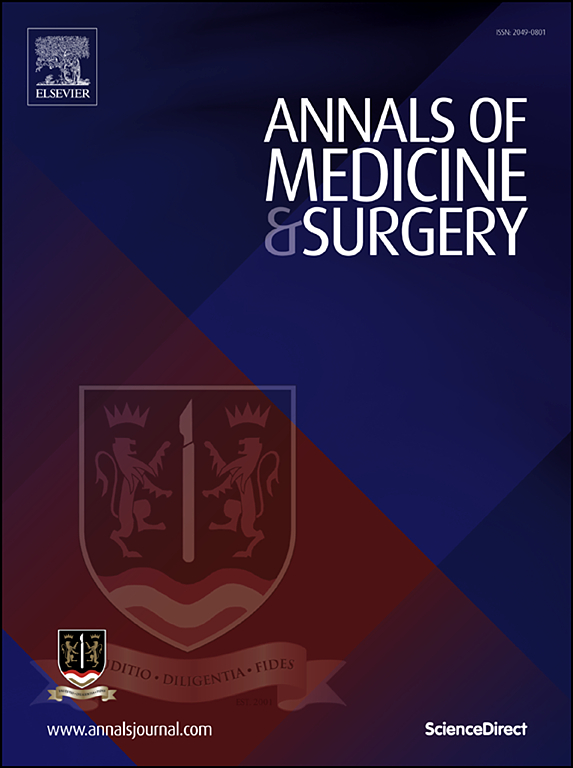Prevalence and predictors of low back pain among the Iranian population: Results from the Persian cohort study
Authors
Affiliations
1Sports Medicine Research Center, Neuroscience Institute, Tehran University of Medical Sciences, Tehran, Iran.
2Imam Khomeini Hospital Complex, Tehran University of Medical Sciences, Tehran, Iran.
3Research Center for War-affected People, Tehran University of Medical Sciences, Tehran, Iran.
4Digestive Disease Research Center, Digestive Diseases Research Institute, Tehran University of Medical Sciences, Tehran, Iran.
5Department of Epidemiology and Biostatistics, School of Public Health, Tehran University of Medical Sciences, Tehran, Iran.
6Liver and Pancreatobiliary Diseases Research Center, Digestive Diseases Research Institute, Tehran University of Medical Sciences, Tehran, Iran.
7Social Determinants of Health Research Center, Research Institute for Health Development, Kurdistan University of Medical Sciences, Sanandaj, Iran.
8Department of Medicine, Ahvaz Jundishapur University of Medical Sciences, Ahvaz, Iran.
9Gastroenterohepatology Research Center, Shiraz University of Medical Sciences, Shiraz, Iran.
10Department of Orthopedics, School of Medicine, And Modeling in Health Research Center, Shahrekord University of Medical Sciences, Shahrekord, Iran.
11Nutrition Research Center, Tabriz University of Medical Sciences, Tabriz, Iran.
12Social Determinants of Health Research Center, Urmia University of Medical Sciences, Urmia, Iran.
13Department of Internal Medicine, Faculty of Medicine, Rafsanjan University of Medical Sciences, Rafsanjan, Iran.
14Noncommunicable Diseases Research Center, Fasa University of Medical Sciences, Fasa, Iran.
15Department of Clinical Biochemistry and Nutrition, Faculty of Medicine, Sabzevar University of Medical Sciences, Sabzevar, Iran.
16Colorectal Research Center, Shiraz University of Medical Sciences, Shiraz, Iran.
17Yazd Cardiovascular Research Centre, Shahid Sadoughi University of Medical Sciences, Yazd, Iran.
18Health Promotion Research Center, Zahedan University of Medical Sciences, Zahedan, Iran.
19Endocrinology and Metabolism Research Center, Hormozgan University of Medical Sciences, Bandar Abbas, Iran.
20Digestive Disease Research Center, Ardabil University of Medical Sciences, Ardabil, Iran.
21Gastrointestinal Cancer Research Center, Non-communicable Diseases Institute, Mazandaran University of Medical Sciences, Sari, Iran.
22Gastrointestinal and Liver Diseases Research Center, Guilan University of Medical Sciences, Rasht, Iran.
23Yasuj University of Medical Sciences, Yasuj, Iran.
24Research Center for Environmental Determinants of Health (RCEDH), Health Institute, Kermanshah University of Medical Sciences, Kermanshah, Iran.
25Division of Rheumatology, Faculty of Medicine, Geneva University Hospitals, Geneva, Switzerland.
Abstract
Background and objectives: Low back pain (LBP) is a common health condition in populations. Limited large-scale population-based studies evaluated the prevalence and predictors of LBP in developing countries. This study aimed to evaluate the prevalence and factors associated with LBP among the Iranian population.
Methods: We used baseline information from the Prospective Epidemiological Research Studies in Iran (PERSIAN), including individuals from 16 provinces of Iran. LBP was defined as the history of back pain interfering with daily activities for more than one week during an individual’s lifetime. Various factors hypothesized to affect LBP, such as age, sex, marital status, educational status, ethnicity, living area, employment status, history of smoking, body mass index (BMI), physical activity, sleep duration, wealth score, history of joint pain, and history of morning stiffness in the joints were evaluated.
Results: In total, 163770 Iranians with a mean age of 49.37 (SD = 9.15) were included in this study, 44.8% of whom were male. The prevalence of LBP was 25.2% among participants. After adjusting for confounders, the female gender [OR:1.244(1.02-1.50)], middle and older ages [OR:1.23(1.10-1.33) and OR:1.13(1.07-1.42), respectively], being overweight or obese [OR:1.13(1.07-1.19) and OR:1.21(1.16-1.27), respectively], former and current smokers (OR:1.25(1.16-1.36) and OR:1.28(1.17-1.39), respectively], low physical activity [OR:1.07(1.01-1.14)], and short sleep duration [OR: 1.09(1.02-1.17)] were significantly associated with LBP.
Conclusion: In this large-scale study, we found the lifetime prevalence of LBP to be lower among the Iranian population in comparison to the global prevalence of LBP; further studies are warranted to evaluate the causality of risk factors on LBP.
Keywords: BMI, body mass index; Iran; LBP, low back pain; Low back pain; PERSIAN; Prevalence; YLD, years of healthy life lost due to disability.

